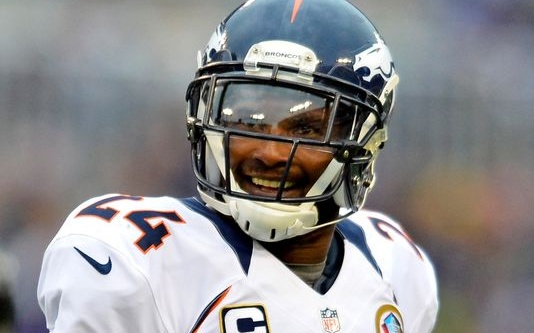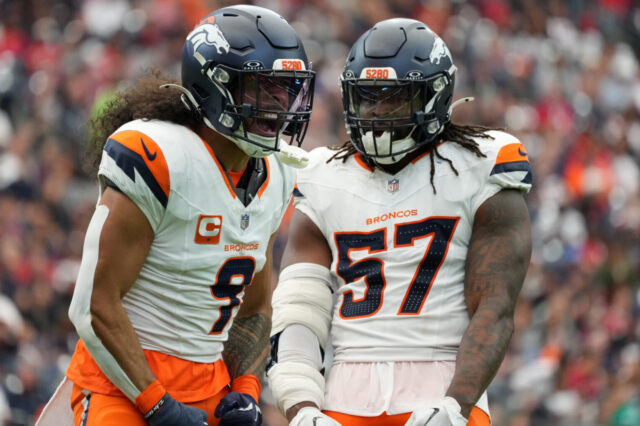This weekend, the NFL will announce the 2019 inductees for the Pro Football Hall of Fame and it is very likely that long-time Broncos owner Pat Bowlen and cornerback Champ Bailey will each be receiving gold jackets this year.
After narrowly missing the cut in recent years, Bowlen has rightfully garnered much of the media’s attention, as more and more people begin to realize just how important his impact on the NFL has been. But, with so much energy being focused on Bowlen, it’s easy to overlook that Bailey was the most dominant cornerback in the league for a decade-plus.
A 12-time Pro Bowler with 54 career interceptions over 15 seasons, Bailey most definitely has a Hall of Fame resume. However, it is difficult to put into words just how special his career was. Acquired from the Washington Redskins in a blockbuster trade for Clinton Portis in 2004, Bailey played for the Denver Broncos from 2004-13 and was part of five trips to the postseason.
In his first three seasons with the Broncos alone, Bailey had 21 interceptions, three of which he returned for touchdowns, while also recording 230 total tackles. In 2006, Bailey recorded a career-high 10 interceptions, without allowing a single touchdown pass all season. If you don’t get get the picture yet — Bailey was not just a good football player — he was a once-in-a-generation talent.
Bailey was the face of the franchise and childhood idol of thousands of young Broncos fanatics, including yours truly. Admittedly, Bailey was not always my favorite player though.
When Portis rushed for 218 yards and five touchdowns in a 45-27 victory over Kansas City on Dec. 7, 2003, much of Broncos Country thought that the former Miami Hurricanes star was well on his way to becoming the next Terrell Davis; especially an 8-year old Justin Michael, who was beginning to absolutely fall in love with the game of football. So, when I received a Clinton Portis jersey for Christmas a few weeks later, it was easily the most excited I had ever been.
Fast forward to Mar. 4, 2004, when the trade became official. After getting a No. 26 jersey three months earlier, Portis was no longer on the Broncos roster and I was devastated. I’m almost certain that I cried. 8-year olds do not care about how good a trade is on paper: they just know who they think is cool, and there was nobody cooler at the time than Portis.
When the 2004 season started, my anger about the trade had not disappeared. Seeing Portis in a maroon jersey was almost too much to take, but a 5-1 start kept me interested in the game.
By 2005, I was pretty much over the trade and accepted that bringing in Bailey was a necessary move in a conference that was beginning to be perennially dominated by Peyton Manning and Tom Brady. In fact, Bailey forever won me over in the 2005 AFC Divisional Round when he jumped a route in the end zone and returned an interception 100 yards to seal a victory over the visiting Patriots.
That’s the funny thing about sports. After spending years of my life watching this game, I can still pinpoint the two moments that I became infatuated with these players. But, that’s what makes fandom so unique.
Bailey was not just a football player to me. He was a part of my childhood and played a significant role in helping me understand just how fickle the football world can be from a business standpoint.
Now a 23-year old aspiring sports writer, when I think back to Bailey’s time in Denver, I cannot help but laugh at myself for getting so worked up about the Portis trade. One thing is for sure though, I am thankful that I got to spend 10 years of my life watching him suit up for the Broncos.
There have been few players that could make running stride for stride with the world’s best wide receivers look easy, but Champ did so on a weekly basis. Whether it was locking down Reggie Wayne in man-on-man coverage, making a crucial tackle to prevent a first down, or coming up with a game-changing interception, there were truly no limits to his game.



